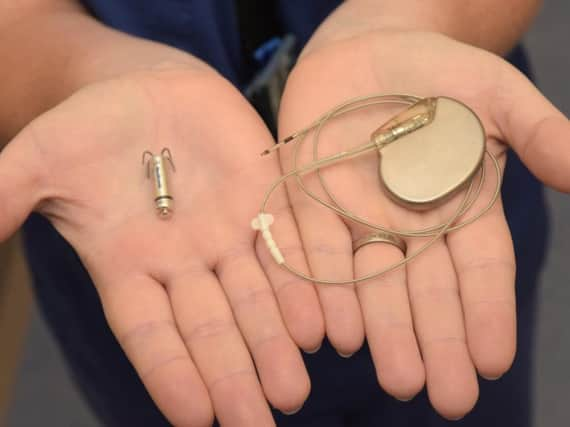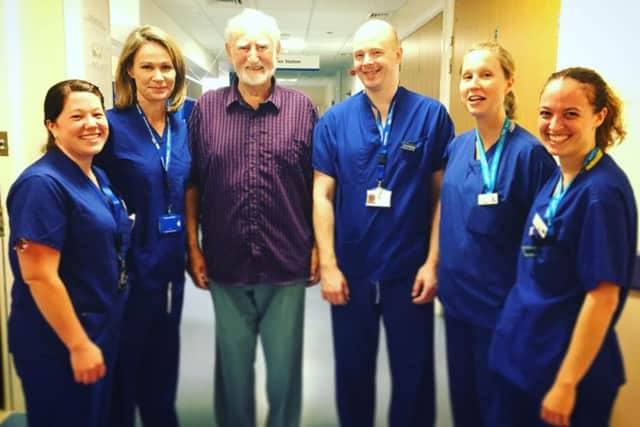World's smallest pacemaker fitted at Northampton hospital in first for UK


The leadless pacemaker can be implanted directly into the patient’s heart via a vein in the leg.
The method reportedly holds half the risk of major complications associated with conventional pacemakers, which are placed in the patient's chest with leads running to the heart.
Advertisement
Hide AdAdvertisement
Hide AdBrian Muddiman, 81, was the first Northampton General Hospital patient to receive the pacemaker. He said: “The whole process has been great. As I lay on the bed I could see my heart on a big screen and see the pacemaker making its way along into my heart.


"The next day I felt fine. Going up the stairs there was no puffing and blowing like before. It’s great that other people will be able to have it too.”
The operation involves leading the pacemaker up through the patient's leg and planting it directly into their heart. The patient can even watch the process on a television screen during the surgery.
Beverley Edwards, head of physiology at Northampton General Hospital, said: “The leadless device benefits patients thanks to its faster recovery time and fewer physical restrictions. Patients are mobile almost straight away. By comparison, there’s a six-week recovery period for standard pacemakers which includes not being able to raise the left arm above shoulder height.
Advertisement
Hide AdAdvertisement
Hide Ad“There are also benefits to our patients’ emotional wellbeing. The lack of scarring and the unobtrusiveness of the device means patients really can forget all about them. They don’t feel ill and they don’t have a constant reminder of the fact they have a device helping their heart to work.”
Northampton General Hospital is expecting to carry out 25 procedures with the pacemaker each year.